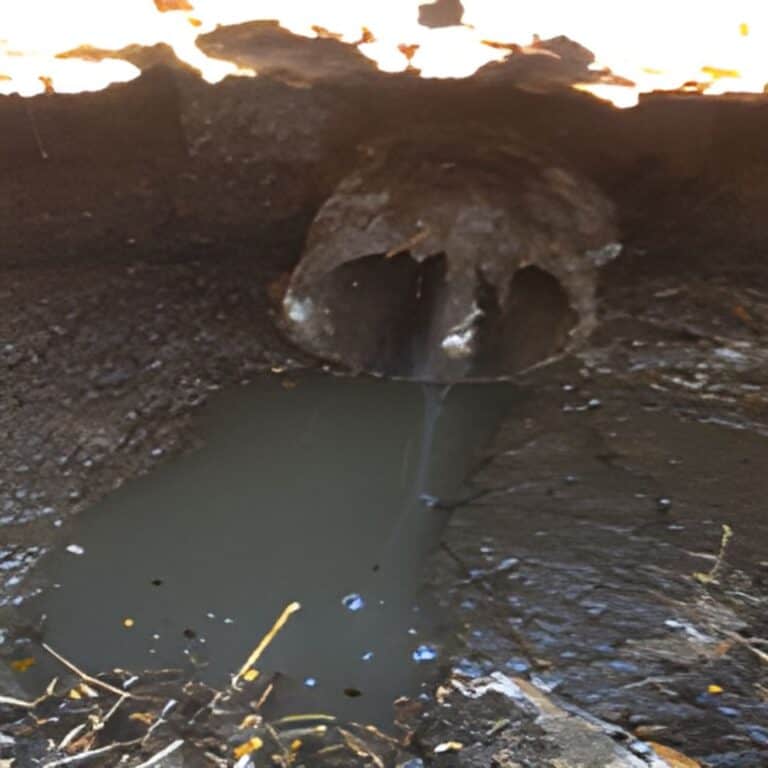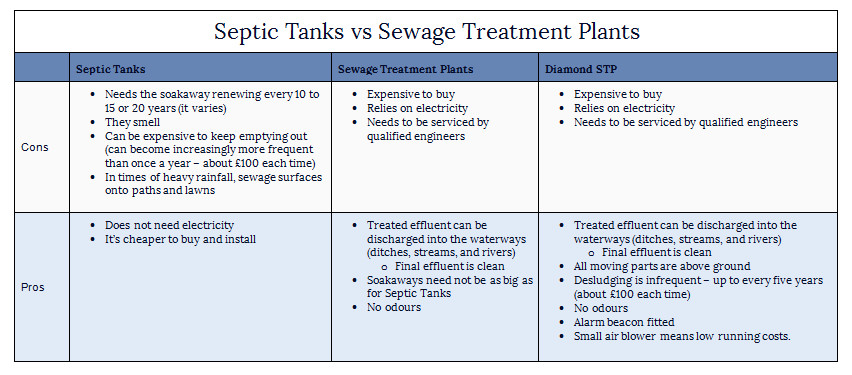Septic Tank Soakaway Problems
Did your septic tank fail or is your soakaway blocked? Do you know the difference? Or maybe your pump station or septic tank conversion stopped working and you’re not sure why? We are here to answer all of your sewage treatment questions, especially when things go wrong!
Soakaway Blocked?
Sometimes natural or unnatural things can clog the system and stop a sewage treatment plant, pump station, or septic tank conversion from working.
If that happens to you, call us! Our friendly and supportive staff will assist you every step of the way. If your septic tank has failed, Allerton can:
- Repair it
- Add a Soakaway
- Make a Septic Tank Conversion
- Replace it
However, we also offer many more services and products beyond that with great value for money. Sometimes a pump station needs to be added to make sure the effluent travels to the correct destination. These can get clogged as well if you’re not careful as you can see in the photo.
You might want to keep in mind that the treatment of sewage is important when it comes to the valuation of your property. Having a fully working system means a lot when a house is being surveyed. Therefore, you should see it as an investment, not a repair.
We are more than happy to help fix your problem. Contact us and we will be happy to make a site visit free of charge. Keep reading to learn more about how sewage treatment systems work and the problems that can happen.
Sewage Treatment System Problems
This is low quality effluent from a 1940s sewage treatment system. It was not emptied regularly which caused problems.
Shampoo bottles can sometimes block a sewage pump station. Nature sometimes causes blockages as well, read more...
Our unit is the ConSept and this is a case when weeds blocked the chamber. Click to learn more.
What are our customers saying?
What are our customers saying?
About Septic Tanks
A Septic Tank is a tank in the ground which partially treats raw sewage before the dirty water goes into a soakaway.
For many generations Septic Tanks were the standard way of treating sewage. Although the effluent should go into a soakaway, sometimes it goes illegally into the river system (including ditches). Environment agency guidelines have changed recently, so it is important to ensure your Septic Tank is up to date. A Septic Tank works by:
- The raw sewage is directed downwards by a T shaped inlet pipe.
The idea is that the sinking solids settle at the bottom, and the floating solids float on the surface. -Floating solids are composed of fats, oils and greases (FOG).
- To prevent the floating solids escaping, we have a similar T shaped outlet pipe.
If the water in the soakaway gets above the top of this T pipe, the floating solids can escape.
What Causes the Septic Tank Soakaway to Fail?
The soakaway starts filling up from day one and the FOG used in cooking is not broken down by anaerobic bacteria. Soakaways start to block from day one.
Gradually all the soil gets blocked so that water can no longer escape. If the water backs up in the Septic Tank so that the level of water rises above the Tee on the outlet pipe then the FOG, the main part of the floating solids instead of being retained, escapes!
The FOG soon smothers the soil and the good aerobic bacteria is prevented from breaking down the organic matter. The soakaway is very soon not fit for anything.
Septic Tank Emptying (Desludging)
The water between the floating solids and the sinking solids is called the settlement zone. This should be about a metre deep, giving time for the fine solids to settle onto the bottom. If the floating solids accumulate at the top, and the sinking solids accumulate at the bottom, then clearly the zone between them gets smaller – meaning that the water travels faster through the tank.
By speeding up the rate of flow, the solids don’t have time to settle out. This means that raw sewage ends up in the soakaway! This is why the Septic Tank should be emptied once a year.
What Can Go Wrong With Desludging?
If the man doing the desludging happens to break the Tee on the Outlet pipe then clearly all the floating solids, including FOG, simply flow out into the soakaway once the Septic Tank is full, usually after a few days. No one notices but the soakaway now has to cope with the worst part of the organic matter.
Sewage Treatment Plant or Septic Tank?
When your system stops working and you don’t know what to do, Allerton can guide you every step of the way. We like to be transparent and informative so you can put your worries to rest.
What are your options to fix a blocked soakaway or failed septic tank system?
- Replace the existing soakaway.
- Install a pump station, and the pump the effluent to a shallower soakaway.
- Convert the Septic Tank to a sewage treatment plant.
- Replace the Septic Tank with a sewage treatment plant and a soakaway.
- Replace it with Sewage Treatment Plant and pump to a shallow soakaway.
- Replace it with Sewage Treatment Plant and pump to the ditch.
- Replace it with Sewage Treatment Plant and simply gravitate to a ditch.
Having a product that works is a worthwhile investment for the long term. There are a variety of factors to consider such as:
- the number of people on the system (Population Equivalent)
- do you need to employ a pump
- how much space and access is available for the installation
- the work should be carried out by qualified British Water engineers
Septic Tank
If you will be discharging into a river, keep in mind that the Environmental Agency requires effluent to be discharged at 20 BOD (Biological Oxygen Demand). Read more about this process on our blog post about turning raw sewage into clean water. A Septic Tank can only produce 200 BOD with the best conditions, so in this situation we recommend installing an Allerton ConSept inside the Septic Tank.
Sewage Treatment Plant
A sewage treatment plant is a great option for treating the effluent from your property. We have products for large and small buildings, plus everything in between.
About Septic Tanks
A Septic Tank is a tank in the ground which partially treats raw sewage before the dirty water goes into a soakaway.
For many generations Septic Tanks were the standard way of treating sewage. Although the effluent should go into a soakaway, sometimes it goes illegally into the river system (including ditches). Environmental guidelines have changed recently, so it is important to ensure your Septic Tank is up to date. A Septic Tank works by:
- The raw sewage is directed downwards by a T shaped inlet pipe.
The idea is that the sinking solids settle at the bottom, and the floating solids float on the surface. -Floating solids are composed of fats, oils and greases (FOG).
- To prevent the floating solids escaping, we have a similar T shaped outlet pipe.
If the water in the soakaway gets above the top of this T pipe, the floating solids can escape.
What Causes the Septic Tank Soakaway to Fail?
The soakaway starts filling up from day one and the FOG used in cooking is not broken down by anaerobic bacteria. Soakaways start to block from day one.
Gradually all the soil gets blocked so that water can no longer escape. If the water backs up in the Septic Tank so that the level of water rises above the Tee on the outlet pipe then the FOG, the main part of the floating solides instead of being retained, escapes!
The FOG soon smothers the soil and the good aerobic bacteria is prevented from breaking down the organic matter. The soakaway is very soon not fit for anything.
Septic Tank Emptying
The water between the floating solids and the sinking solids is called the settlement zone. This should be about a metre deep, giving time for the fine solids to settle onto the bottom. If the floating solids accumulate at the top, and the sinking solids accumulate at the bottom, then clearly the zone between them gets smaller – meaning that the water travels faster through the tank.
By speeding up the rate of flow, the solids don’t have time to settle out. This means that raw sewage ends up in the soakaway! This is why the Septic Tank should be emptied once a year.
Desludging
If the man doing the desludging happens to break the Tee on the Outlet pipe then clearly all the floating solids, including FOG, simply flow out into the soakaway once the Septic Tank is full, usually after a few days. No one notices but the soakaway now has to cope with the worst part of the organic matter.
Sewage Treatment Plant or Septic Tank?
When your system stops working and you don’t know what to do, Allerton can guide you every step of the way. We like to be transparent and informative so you can put your worries to rest.
You’ve got a failed septic tank system, what are your options?
- Replace the existing soakaway.
- Install a pump station, and the pump the effluent to a shallower soakaway.
- Convert the Septic Tank to a sewage treatment plant.
- Replace the Septic Tank with a sewage treatment plant and a soakaway.
- Replace it with Sewage Treatment Plant and pump to a shallow soakaway.
- Replace it with Sewage Treatment Plant and pump to the ditch.
- Replace it with Sewage Treatment Plant and simply gravitate to a ditch.
Having a product that works is a worthwhile investment for the long term. There are a variety of factors to consider such as:
- the number of people on the system (Population Equivalent)
- do you need to employ a pump
- how much space and access is available for the installation
- the work should be carried out by qualified British Water engineers
Septic Tank
If you will be discharging into a river, keep in mind that the Environmental Agency requires effluent to be discharged at 20 BOD (Biological Oxygen Demand). Read more about this process on our blog post about turning raw sewage into clean water. A Septic Tank can only produce 200 BOD with the best conditions, so in this situation we recommend installing an Allerton ConSept inside the Septic Tank.
Sewage Treatment Plant
A sewage treatment plant is a great option for treating the effluent from your property. We have products for large and small buildings, plus everything in between.
Learn more about common sewage treatment problems
Converting horrible sewage into relatively clean water and using nature to do it seems like a miracle at times. To do it is not so easy though. That is the constant challenge.
If there is excessive use of chemicals, then the bacteria are killed. We need the aerobic bacteria to break down not just the organic matter, but the chemicals as well.
At Allerton, we have units that we still service and they are 25 years old and going strong.
This is a piece of kit which converts raw sewage to clean water. Not clean enough to drink of course as it can still carry E. coli and other pathogens.
Sludge is the solids that collect in a septic tank or sewage treatment plant and it needs to be removed to be dealt with by the Water Authorites
Get it serviced properly. Check that it is not being overloaded above what it was designed for.
For Diamond units, every 3 to 5 years.
Why Allerton?
Qualified
Having Allerton service your unit each year means that the problem is recognised quickly and the drainage system saved. We are specialists in off-mains drainage and have 50 years of experience and are knowledgeable in servicing all types of sewage treatment plant installed in the UK.
Value for Money
We offer a free initial consultation for installations, even if we have to travel a distance to do the site visit. We keep our customers in mind when it comes to pricing. We have saved our customers hundreds of pounds over the years. We can do the same for you! Speak to us for a quote!
Friendly
From the office staff to the engineers in the field we are extremely friendly and have received great reviews to prove it. You know you're in good hands with Allerton
Why Allerton?
Qualified
Having Allerton service your unit each year means that the problem is recognised quickly and the drainage system saved. We are specialists in off-mains drainage and have 50 years of experience and are knowledgeable in servicing all types of sewage treatment plant installed in the UK.
Value for Money
We offer a free initial consultation for installations, even if we have to travel a distance to do the site visit. We keep our customers in mind when it comes to pricing. We have saved our customers hundreds of pounds over the years. We can do the same for you! Speak to us for a quote!
Friendly
From the office staff to the engineers in the field we are extremely friendly and have received great reviews to prove it. You know you're in good hands with Allerton
Ready to arrange an appointment?
Contact our office to arrange a visit. Don’t hesitate to reach out to us if you have any questions or concerns.
Ready to arrange an appointment?
Contact our office to arrange a visit. Don’t hesitate to reach out to us if you have any questions or concerns.





